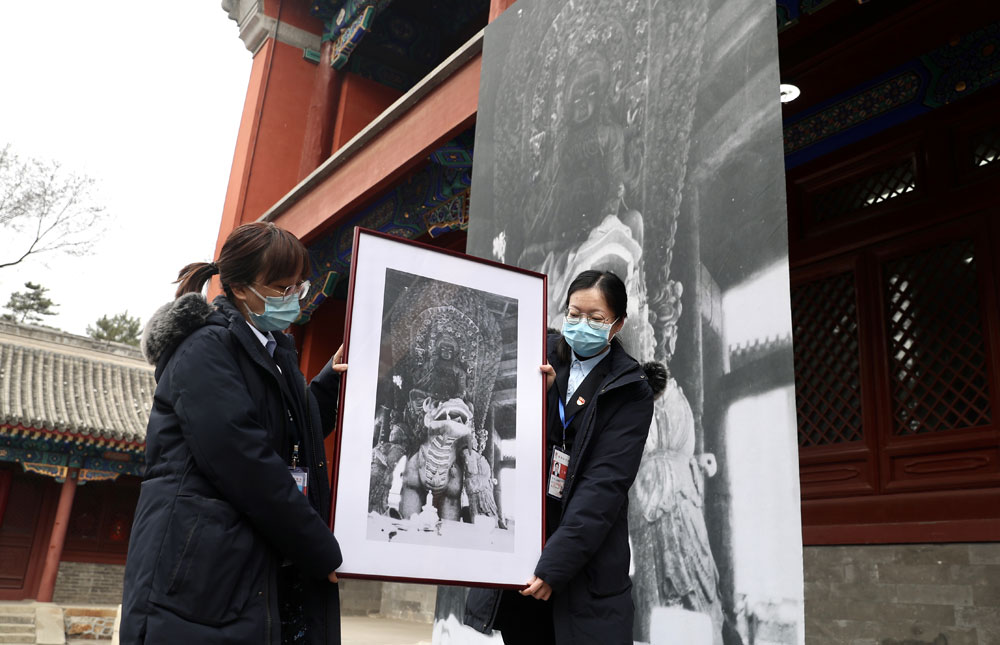Old photos shed new light on Yuanmingyuan's former glory
 0 Comment(s)
0 Comment(s) Print
Print E-mail China Daily, February 25, 2021
E-mail China Daily, February 25, 2021
Referring to historical documents, archaeological research, scattered architectural ruins and ancient artworks portraying original scenes, people have to rely on their imagination to get an impression of the past splendor of Yuanmingyuan, or the Old Summer Palace, in Beijing.

But they may now be able to get a clearer picture of its former glory.
On Tuesday, the administration of the Yuanmingyuan ruins released more than 360 old photos, which were collected globally in recent years. Taken after invading Anglo-French allied forces looted and burned Yuanmingyuan, these photos capture the time before the former royal resort fell into ruin over the following decades.
Most of the photos had never been publicly displayed, and around 100 of them will be exhibited over the next month at the Zhengjue Temple of the Yuanmingyuan Ruins Park.
"These findings will help people get a better understanding of how Yuanmingyuan has changed throughout history," said Li Xiangyang, deputy director of the administration.
First built in 1707 and covering over 350 hectares in its heyday, this former imperial resort of the Qing Dynasty (1644-1911) is often thought of as the zenith of Chinese gardening art.
It had been continuously expanded and renovated until 1860, when it was ransacked and set ablaze by the invading Anglo-French allied forces. Up to that point, images of Yuanmingyuan had only been recorded in paintings.
Yuanmingyuan gradually fell into ruin after it was ransacked-a collective psychological blow for the Chinese people-but written records on how this process took place are insufficient, Li pointed out.
According to Liu Yang, deputy director of the Beijing History, Geography and Folk Custom Society, who had collected the photos, some photographers visited the Yuanmingyuan ruins in the late 19th century, and their works became precious historical references showing that some sites survived in 1860 and continued to exist for some time afterward.
In 1861, 13 sites in Yuanmingyuan that partially remained were mentioned in an official Qing Dynasty report, as Liu cited.
"However, the sites were only named, and we could not specifically know how badly they were damaged in 1860," Liu said.
But these newly found photos provide direct clues of what actually took place after 1860. For example, in a group of photos taken in 1882 by Robert de Semalle, a French diplomat based in Beijing, many wooden constructions can be seen.
"Some of them were even in a good condition, as the photos show," Liu said.






Go to Forum >>0 Comment(s)